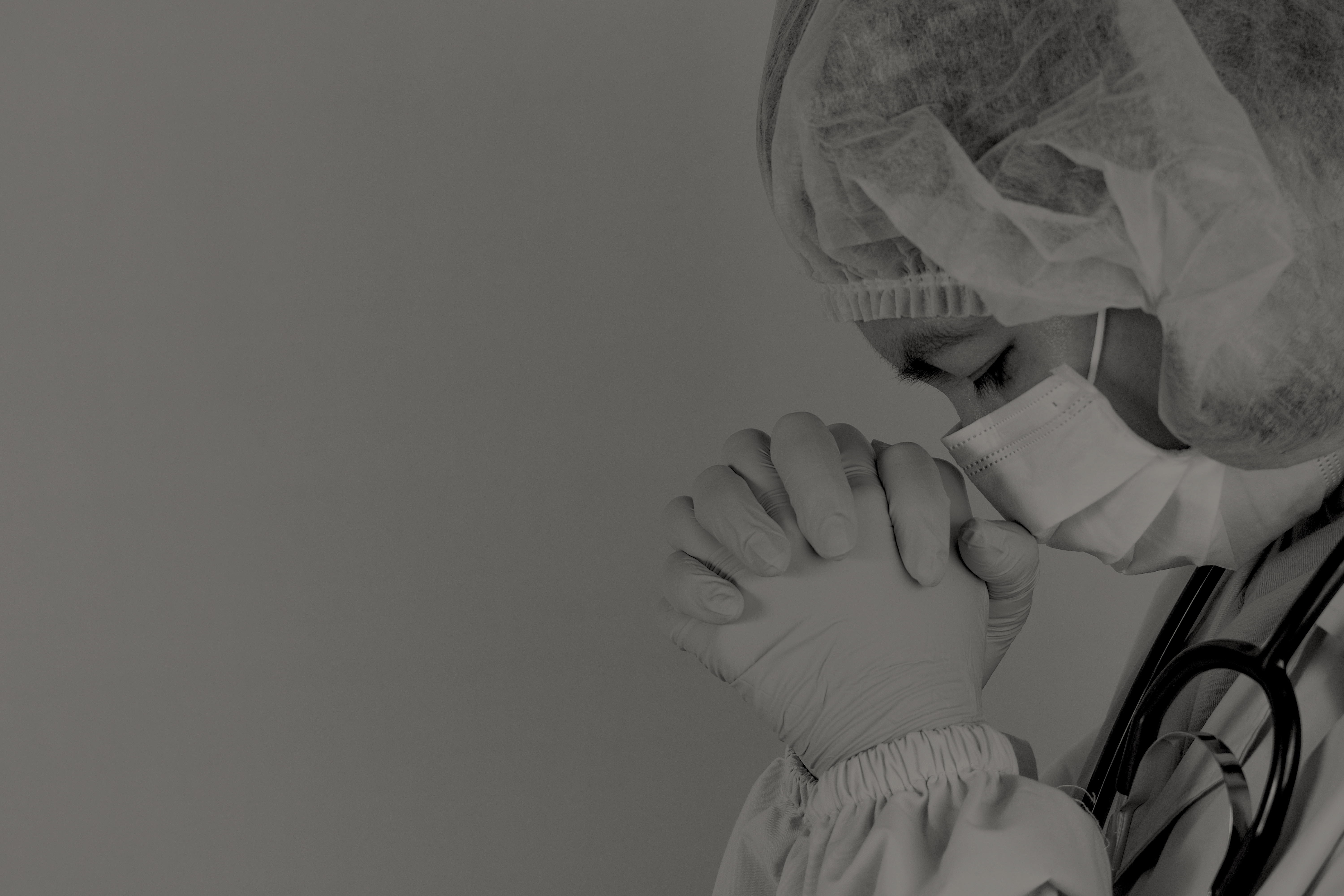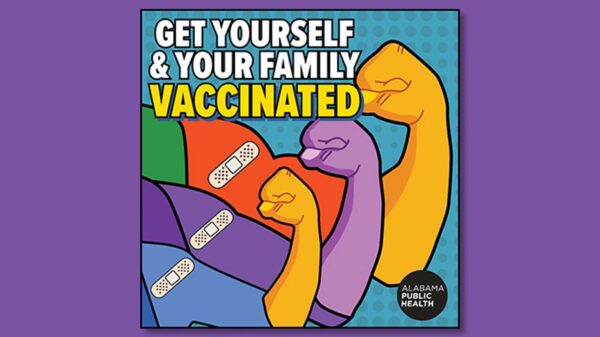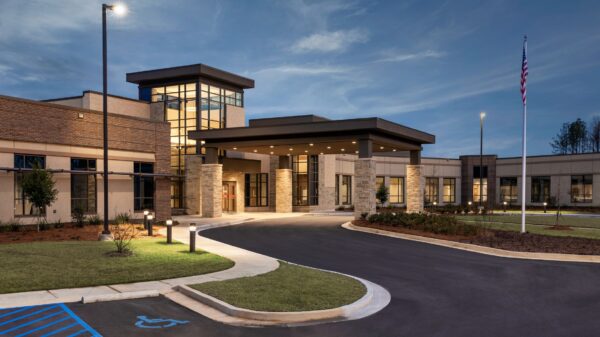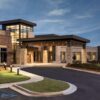Public health experts in Alabama are urging caution and restraint as discussions abound about lifting the state’s stay-at-home order and relaxing other restrictions on the economy in the days and weeks ahead.
Two experts dealing closely with the outbreak warn that reopening will almost certainly lead to a second wave of infections but reopening too quickly and without the proper planning and resources in place may lead to an outbreak worse than the first.
“We have to open with the full expectation we’re going to have a second wave,” said Dr. Donald Williamson, the head of the Alabama Hospital Association and a longtime public health official who served as Alabama’s state health officer for more than 20 years. “If we don’t have a vaccine in time, we could have a third wave.”
On Friday, Lt. Gov. Will Ainsworth’s small business committee released recommendations that called for immediately reopening most retail businesses and phasing in more re-openings by May 1. The committee’s recommendation came after President Donald Trump and the federal government released new guidelines for states planning to relax their stay-at-home orders and social-distancing restrictions.
On Monday, Georgia Gov. Brian Kemp said that certain businesses — including gyms, body art studios, barbers, hair and nail salons, and massage therapy businesses — could begin to reopen this week. Theaters and restaurants can begin reopening next week, the Georgia governor said. Notably, he blocked cities like Atlanta from imposing their own restrictions not in line with his own.
Alabama Gov. Kay Ivey has not made a decision on how she plans to move forward with lifting or loosening restrictions, but she has said her approach will be targeted and “reasoned,” relying on guidance from public health experts.
As states surrounding Alabama begin to lift restrictions and pressure mounts for the same to be done here, several public health experts warned that not enough time has gone by to know how effectively we have contained the first wave. On top of that, testing has not been expanded far and wide enough to be able to catch, contain and mitigate the next outbreak early enough to prevent the need for another shutdown, the experts said.
“Until we have an effective vaccine or treatment, we’re buying time,” said Dr. Jodie Dionne-Odom, a specialist in infectious diseases at UAB Medicine in Birmingham. “I think you have to think very carefully about opening up too quickly when the impact is going to be people getting very sick. It’s a really hard decision to make. We need to keep the health of our communities at the forefront.”
The University of Washington’s Institute for Health Metrics and Evaluation Model, which has influenced both the White House and the Alabama Department of Public Health, projected that Monday, April 20, would be the peak of projected daily deaths in Alabama. The same model, which has received criticism at times for being too optimistic and for being too uncertain, warns that the state should not begin relaxing social distancing guidelines until after May 18.
“The stay-at-home order remains in effect until April 30 unless the state health officer, in coordination with the governor, changes that,” said Dr. Karen Landers, the assistant state health officer. “It’s important to be aware that that does remain in effect at the moment, but those situations do continue to be re-evaluated.”
Landers said the state health officer, Dr. Scott Harris, and the governor’s office will be working together to determine the parameters for the state moving forward, but for now, the order remains in place.
“We know there’s federal guidance on that,” Landers said of relaxing the stay-at-home order. “That will be carefully weighed with all of the information we have going forward in order to do what’s best for the citizens of Alabama.”
Testing people in the state for the virus quickly — not just health care workers and people who are very symptomatic — will be key to reopening the state safely, the experts who spoke with APR said. They remained concerned that there is not enough testing being performed in the state to have a true grip on whether the curve has truly flattened.
[visual-link-preview encoded=”eyJ0eXBlIjoiaW50ZXJuYWwiLCJwb3N0Ijo4Njc1MCwicG9zdF9sYWJlbCI6IlBvc3QgODY3NTAgLSBJcyBBbGFiYW1hIHJlYWR5IHRvIGVhc2UgQ09WSUQtMTkgcmVzdHJpY3Rpb25zPyBBIGxvb2sgYXQgdGhlIGRhdGEiLCJ1cmwiOiIiLCJpbWFnZV9pZCI6ODY4NjcsImltYWdlX3VybCI6Imh0dHBzOi8vd3d3LmFscmVwb3J0ZXIuY29tL3dwLWNvbnRlbnQvdXBsb2Fkcy8yMDIwLzA0L0Fkb2JlU3RvY2tfMzMxNzc0Njc4LXNjYWxlZC1lMTU4NzM5NjA0NDE0Mi0xMDAweDYwMC5qcGVnIiwidGl0bGUiOiJJcyBBbGFiYW1hIHJlYWR5IHRvIGVhc2UgQ09WSUQtMTkgcmVzdHJpY3Rpb25zPyBBIGxvb2sgYXQgdGhlIGRhdGEiLCJzdW1tYXJ5IjoiSXQmIzgyMTc7cyBiZWVuIDM5IGRheXMgc2luY2UgQWxhYmFtYSBjb25maXJtZWQgaXRzIGZpcnN0IGNhc2VzIG9mIENPVklELTE5IG9uIE1hcmNoIDEzLiBOb3csIG1vcmUgdGhhbiBhIG1vbnRoIGxhdGVyLCB0aGUgbnVtYmVyIG9mIHBlb3BsZSB3aG8gaGF2ZSB0ZXN0ZWQgcG9zaXRpdmUgZm9yIHRoZSBjb3JvbmF2aXJ1cyBpcyBuZWFyaW5nIDUsMDAwLiAiLCJ0ZW1wbGF0ZSI6InVzZV9kZWZhdWx0X2Zyb21fc2V0dGluZ3MifQ==”]
“Based on the reporting, cases are going down. We’re flattening at least or maybe going down,” Williamson said. “I have two concerns about that. The number of positive tests has a direct relationship to the number of people tested. So, I still worry about whether we have adequate testing. I wonder if we doubled the tests would we double the number of positives.”
As an analysis APR published Monday morning shows, the number of new tests being performed per day has increased at a rate similar to that of new cases being reported per day. As the rate of increase in new tests being performed slows, so has the rate of new confirmed cases slowed.
The White House’s plan to reopen has three prongs. “You want to know that the number of cases in your community is consistently coming down for 14 days,” Dionne-Odom said. “If you reopen going up on the curve, there’s nowhere to go but up even further.”
Before proceeding to a phased comeback, states must record two weeks of a downward trajectory of COVID-19 cases and flu-like illnesses, be able to treat all patients without crisis care, and have a robust testing program for at-risk healthcare workers. When states prepare to move into the first phase of relaxing restrictions, they must have a robust testing and contact-tracing system in place.
“You can’t stay closed down forever, but you don’t want to open too soon,” Williamson said. “And you’re not going to know until after you’ve opened if you’ve opened too soon.”
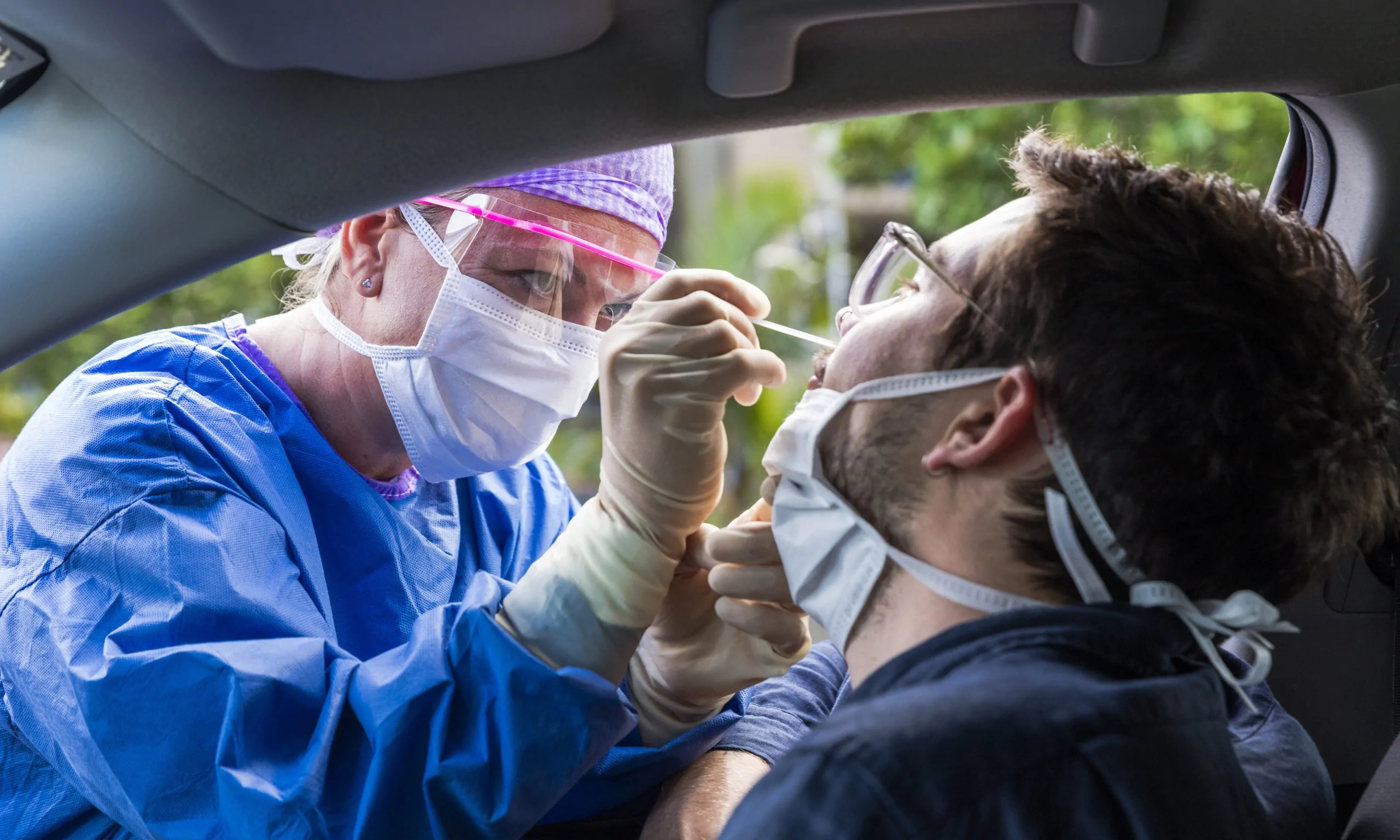
A doctor in a protective suit taking a nasal swab from a person to test for possible coronavirus infection. (Stock photo)
A long way to go on testing
Experts at Harvard have said states need to nearly triple the number of tests performed per day by May 1 to be able to reopen safely, but the authors of that study have said their estimates are conservative. More tests will likely be needed.
Alabama has tested less than 1 percent of its population at this point. And is testing only about 47 people per 100,000 people per day. Harvard’s researchers say the state needs to be able to perform, at a minimum, 152 tests per 100,000 per day to reopen safely.
“Has our capacity for testing come a long way? Yes,” Dionne-Odom said. “Do we still have a long way to go? Yes. That means understanding what’s happening at the population level, not just in our hospital.”
So far, the state has been able to expand testing for those in the most at-risk groups, including health care workers, long-term care facility employees and residents, and those who are being treated in hospitals. In the last two weeks, as testing for those groups has expanded, the number of confirmed cases among those groups has grown, too. Health care workers and long-term care facility residents and employees now account for 28 percent of the state’s total cases.
Expanding access to testing an improvement over just a few weeks ago when it was difficult for even hospitalized patients and health care workers to get tests. State officials said federal agencies seizing or superseding orders of testing materials like swabs slowed the state’s rollout of testing.
But even with expanded testing for those at-risk groups, experts worry that the data sample is surely biased, and is not likely to be grasping the true extent of the outbreak. With new reports out of New York and the U.S. Navy aircraft carrier Theodore Roosevelt, concerns are mounting that more people than previously thought are capable of spreading the virus before they develop symptoms.
“There’s studies showing that people who are asymptomatic or pre-symptomatic have levels in their nose that are just as high as someone who is symptomatic, which is different than some other viral infections,” Dionne-Odom said. “If you’re focusing all your attention on the person with a fever and cough, you may be missing a lot of the people in the community who are actually spreading this infection to others without realizing.”
And many never develop symptoms at all but are still contagious.
“We’re still restricting a lot of the tests to people who have symptoms or people who’ve had a known exposure,” Dionne-Odom said. “At UAB, we can test 500 to 600 people a day, but that doesn’t mean everyone in the community is getting tested. … We think a lot of the outbreak is now happening in rural areas, and we do worry that there may not be enough testing happening to understand exactly how widespread it is there.”
A growing number of the state’s largest hospitals, including UAB and Huntsville Hospital, have developed the capacity to test themselves, but many of the state’s smaller and more rural hospitals are still having to send samples to be tested at the state’s lab in Montgomery or at commercial labs. At some points, the time it has taken to get a result has been as long as a week. The turnaround time has improved, Williamson said, but he worries that there still is not enough capacity.
“Just like every state, we have complained that we aren’t able to test as many people as we would like,” Williamson said. “I think that’s where Alabama is. … It’s one thing if we have 24-hour turnaround right now, but if you liberalize and suddenly have to test substantially more people, how long is that 24-hour turnaround time going to last before it becomes 48 or 72 hours again?”
Like Williamson, Dionne-Odom said the current case count, which surpassed 5,000 today, is likely a conservative estimate of the virus’s true spread.
“We think that the counts in Alabama are an underestimate of the actual number of cases that we have,” she said.
The slow rollout of testing has largely been caused by the fact that officials and hospitals have been forced to limit testing because of supply chain issues at nearly every phase of the testing process. Those shortages, at some point or another, have involved nasal swabs, the containers used to suspend and transport the samples, the reagents needed to perform the tests in the labs and the machines used to run the tests.
Being able to identify the number of asymptomatic and pre-symptomatic cases would impact the state “a great deal,” the experts said, because tracing and isolating those cases will be imperative to prevent a second wave of the outbreak.
“Before you have people back out in public again, it sure would be nice to know what the status was of all these people going back out onto the street,” Dionne-Odom said.
Landers said the Alabama Department of Public Health’s state lab has expanded its testing capacity from 150 tests per day to more than 350 tests per day, but issues with supplies have limited the ability to expand testing further. The state is also looking into point-of-care tests, but reagents for those are in short supply. She said they hope to expand operations to more than 600 tests a day in the coming weeks, but it’s unclear when that capacity will come to fruition.
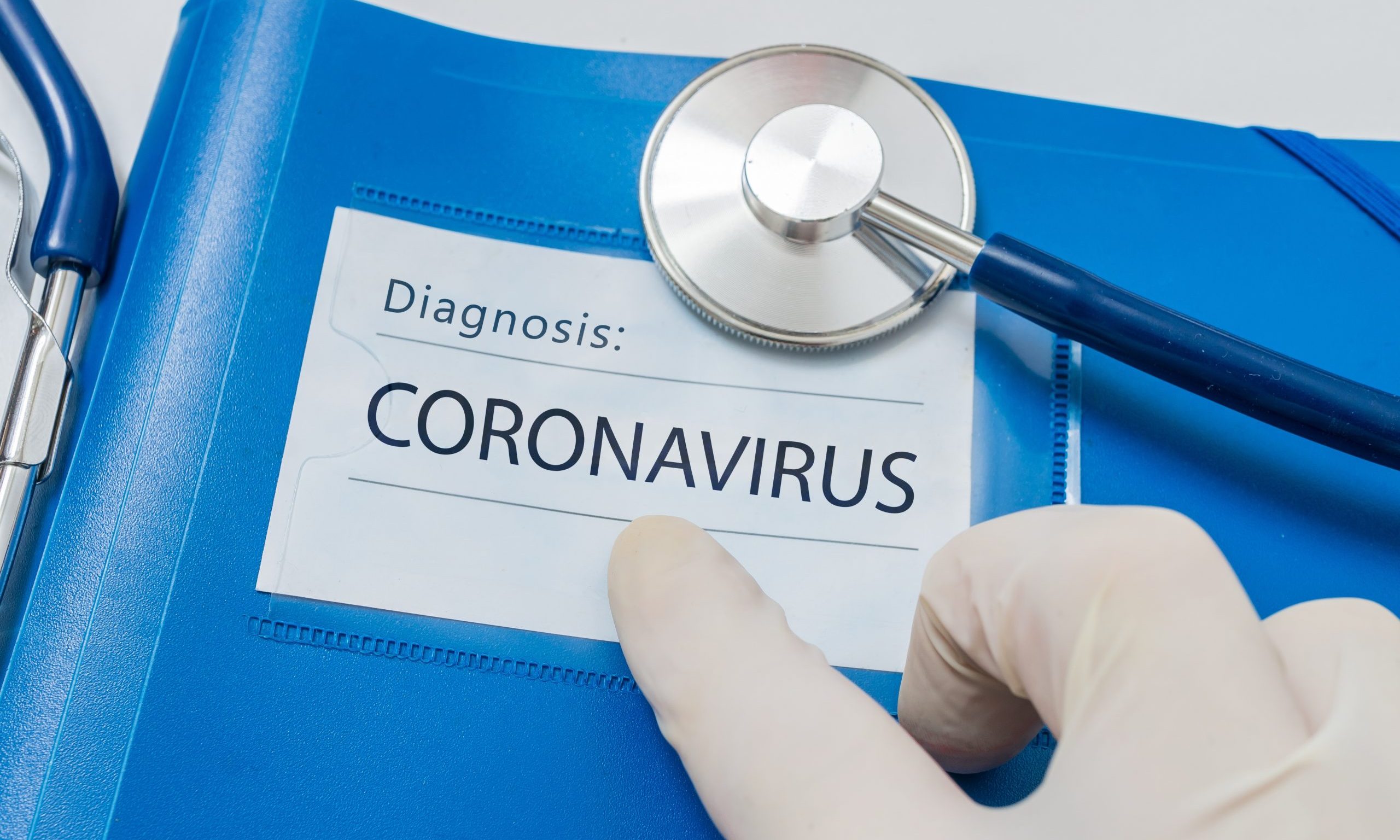
(Stock photo)
Contact tracing, surveillance and isolation of new cases
Whenever the state does open up again, which could be soon, staff must be in place to track and isolate new cases before they’re able to infect more people, causing a surge in new cases that could force another shutdown. It’s not clear the state has the capability to trace the cases it currently has quick enough to isolate those cases effectively.
“What’s the level of cases at which public health can adequately follow up on every positive,” Williamson said. “Certainly, with the load they’ve got now, I can’t imagine they can do that. So that’s another issue.”
Recommendations from the federal government also suggest states will need to ramp up contact tracing as they begin to move into a containment phase of the outbreak. Harvard’s researchers suggest that enough tests must be available to test at least 10 of the contacts for each identified positive case. Time will also matter.
A day could make a huge difference in limiting the number of new infections that occur from a positive. If contact tracers notify a person earlier, that person can limit their contacts and get tested themselves. But if the person has no idea they’ve been exposed to someone who has tested positive, they may go about their lives, infecting more and more people. Hours could even make a difference.
“So you would test a person, find out they have infection, call them and say, ‘Who have you been in close contact with in the past 48 hours?’” Dionne-Odom said. “For all those people, you offer them testing, and then you start to get a sense of the circles of how much disease is happening in our community that we may not be recognizing.”
Landers said the Department of Public Health has continued to do contact-tracing during the outbreak, but the department’s limited staff has been worked thin. The infectious diseases and outbreak division is even thinner. Going into the outbreak, it had only 20 staff members. Landers said the department has shifted resources to expand the ability to perform contact tracing.
“We have pulled in investigators from our TB [tuberculosis] control program, our vaccines and preventable diseases program, our immunizations program, our HIV program and other programs in the health department,” she said. “We’ve been able to tap into probably 120 workers. The challenge is, they mostly have other jobs, too. Public health does not stop for one outbreak.”
These investigators are working extra hours — up to 14 hours a day — to continue contact tracing. The department is also reaching out to medical students and other public health students who may be able to adequately staff the department moving forward, but it will be a challenge, Landers said.
“Do we have adequate staff to do this going forward?” Landers said. “Well, we’re going to find a way to do this one way or the other. Contact tracing is something that’s just so vital that you just have to find a way.”
Hospital staffing, PPE and ventilators
Alabama appears to have avoided a health care crisis during this first wave. Williamson said that Alabama’s health care system, so far, has been able to handle the surge in COVID-19 cases without running out of ventilators or PPE, though there have been some close calls at certain hospitals.
Moving forward, Williamson said the state must use the trough after the first wave of cases to stock up and prepare for a second wave, which could come when restrictions are lifted.
“We’re fine on capacity, for right now,” Williamson said. “Now, as I have said, I still think there will be those isolated outbreaks like the nursing home in Alexander City or the nursing home in Mobile where you’re going to have a heavy burden of disease. If you put that in the wrong place, you may overwhelm an individual hospital. But on a system basis, I think we’re okay.”
Just because hospitals haven’t been overwhelmed yet doesn’t mean they couldn’t be in the future. Keeping bed occupancy and ventilator levels at hospitals stable has meant drastic measure including prohibiting elective procedures and sourcing hundreds of new ventilators. Moving forward, Williamson said hospitals can’t stop preparing.
“I think we have to spend the time between these waves stocking up so that we don’t find ourselves in the same place, or worse, six months or a year from now when we have a second or third wave,” Williamson said. “Getting through the first wave with as minimal disruption as possible means we have to use that time to prepare.”
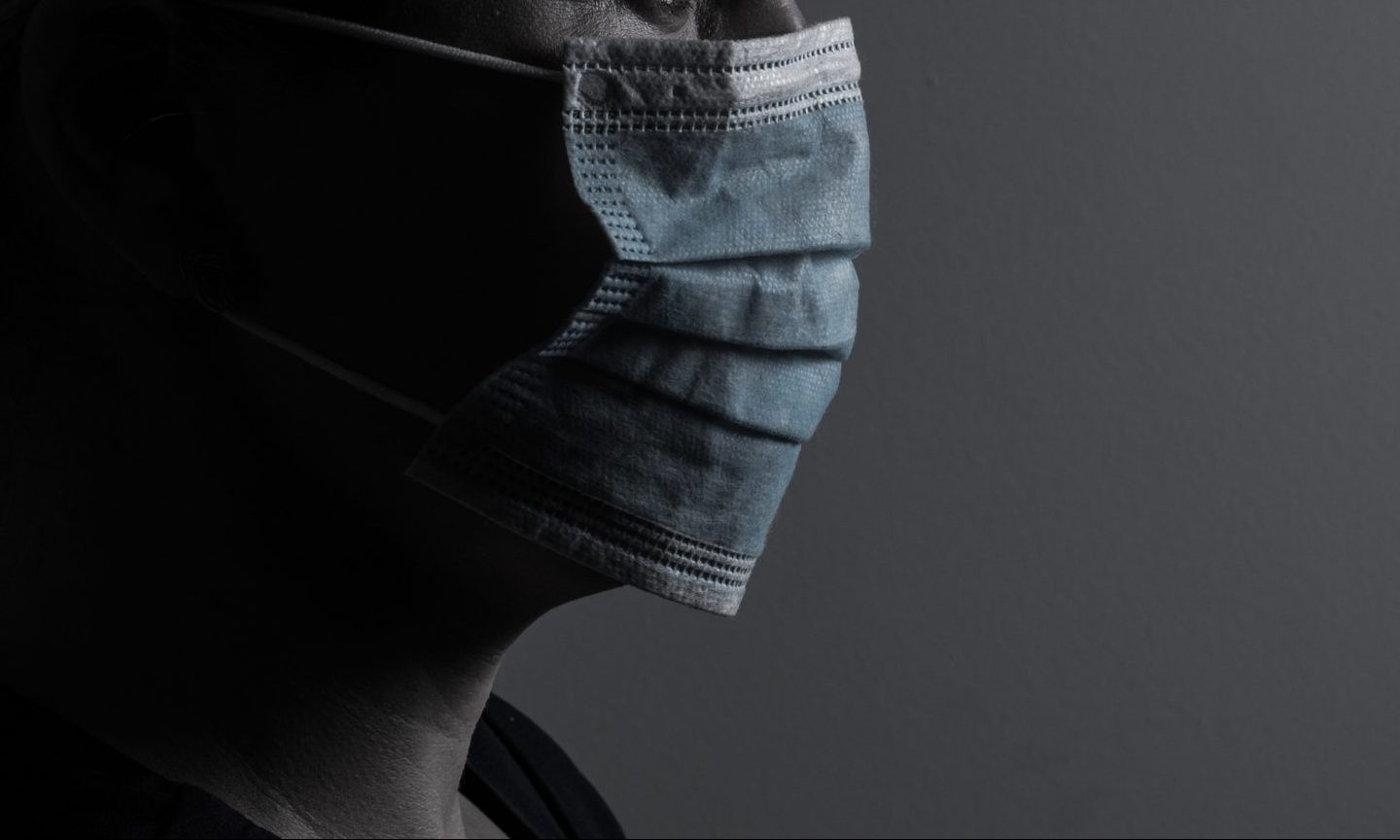
(Stock photo)
The days and weeks ahead
As glimmers of optimism have arrived in the last week or two, some other areas of concern remain. Jefferson County has seen its outbreak slow considerably. Public health officials and experts at UAB credit the improving situation there, which has no doubt contributed to a slowing in statewide totals, with early intervention and stay-at-home order that came earlier than the state as a whole.
Meanwhile, other areas remain a concern. In the state’s rural counties, where testing was inaccessible in the outbreak’s early weeks and remains sparse even now, cases are rising. Many of the state’s rural counties from Greene and Pickens counties in the west to Tallapoosa and Chambers counties in the east, now have higher per capita case counts than Jefferson, Lee, Montgomery, Mobile or Madison, where the state’s largest cities are.
In Mobile, the number of cases has skyrocketed in the last two weeks and, despite a smaller population, the county is now on the verge of overtaking Jefferson County to have the most cases in the state. This comes as elected officials in Alabama are coming under increased pressure from those on the right to ease restrictions. In other states, conservative supporters of President Trump have rallied against stay-at-home orders.
The experts who spoke to APR said they worry that when restrictions are eased or lifted, people may feel they are walking back out into a normal world.
“I worry about an over-exuberance when the conditions change, people assuming the world is as it was in November of last year, not the world today,” Williamson said. “I worry that people will not continue social-distancing enough to prevent increased transmission.”
The reality is that no one knows what is going to happen in the next few weeks and months. As the experts have said, this is a process of mitigation and containment, not one akin to flipping on or off a light switch.
These discussions have taken on even more salience as scientists and medical researchers have been raising concerns about how long acquired immunity may last after someone recovers from the virus.
“We still need a lot more information to understand how long immunity is,” Dionne-Odom said. “If this acts the way we expect it to, you should have some period of immunity. That may be six months. It may be 12 months. But beyond that, we cannot say.”
There are also concerns about the accuracy of antibody tests under development, which would be needed to determine if someone has been infected with the virus in the past.
“We don’t know that that antibody is protective and we don’t know how long it’s going to last, but it will allow you to distinguish between these two groups — the ones who’ve had it and ones who’ve not yet had it — and that will be really powerful,” Dionne-Odom said.
Realistically, it will likely take another year to 18 months before a vaccine can be developed. Some experts say that is an optimistic timeline. It’s not even clear how effective a vaccine will be. Experts just do not know. If natural immunity turns out to be too weak or too temporal, developing a vaccine that is effective for more than a few months could be equally as challenging. Rolling out millions of doses of a vaccine will be a heavy lift, too.
“Every system can be overwhelmed,” Dionne-Odom said. “And that’s what this virus has the potential to do until we have an effective vaccine or treatment. We’re buying time so that we can keep the numbers of patients coming into the hospital manageable.”
Nothing is clear, but all this means that we could be dealing with these blunt-force measures — rolling shutdowns, business restrictions and social-distancing — for months if not more than a year. That has the experts just as worried as the disease itself.
“If you suddenly see the outbreak again, and we’re all the way back to where we were when we started, then you have to potentially ratchet down on the ability for people to go out again and you have to reimpose more restrictive social distancing,” Williamson said. “What I worry about is will people be willing to do that a second time, or a third time. I just continue to worry about not so much this wave, but what the second wave looks like, what the third wave looks like. In the 1918 pandemic, it was not the first wave that was most deadly. It was the second wave.”
As this continues to unfold, officials will be faced with many difficult decisions and very few “right answers.”
“We see mostly that this is impacting older people and people with chronic medical conditions, but no one is immune,” Dionne-Odom said. “Arguments can be made about economics and about getting back to normality. I totally get that. … But we owe it to one another as a community to stay strong and keep fighting this together.”




































